In the first part of this blog post series I discussed the different supercharger rates and what effect of weather and battery condition have on it. In this second part of my blog post series about the basics of driving a Tesla car, I want to focus a bit on the range anxiety of electric cars and the many remarks, consternations and questions I’ve seen on the different forums.
I will speak for the most part from my experience as a Model S driver. I have no real-world experience with a Model X, but it is obvious that because the Model X is heavier and is less aerodynamic than the Model S, it will consume more energy. This is also demonstrated in the first image below, where the NEDC range is depicted for both cars.
NEDC advertised range
When I bought my P85D, the advertised range for it was 507km NEDC. The newer cars with the 100kWh battery can do up to 632km NEDC. Now what does that mean in the real world? To understand that, we need to dig a bit deeper into what exactly NEDC is. For starters, it is an acronym that stands for New European Driving Cycle. This is the standard driving cycle that is used in Europe (in the US this is called the EPA) for determining the consumption and emission levels of the car. In essence, it is an attempt to get an independent control organisation to rate all cars objectively.
Now, I say it is an attempt, because the driving cycle and conditions they use is not related to any real-world situation at all. The cycle must be performed on cold vehicles (no warm engines allowed) and in around 25°C surroundings and usually, for repeatability, on a roller bench. There’s the biggest problem already. The roller bench does not have the same friction coefficient as the real roads, does not mimic different types of road surface and certainly does not account for additional friction in corners.
They try to compensate for this by using reverse torque on the roller bench to emulate the wind and surface resistance, but it’s no real substitute for the ever-changing conditions in the real world (wind gusts, different road surfaces, cornering forces etc.). I’m not going to get into the nitty-gritty details of the test cycle down to the second here. There are plenty of resources where you can find those. But both urban and extra-urban tests are done and then combined to get an average weighted value, which the car company can then advertise as the range of the car.
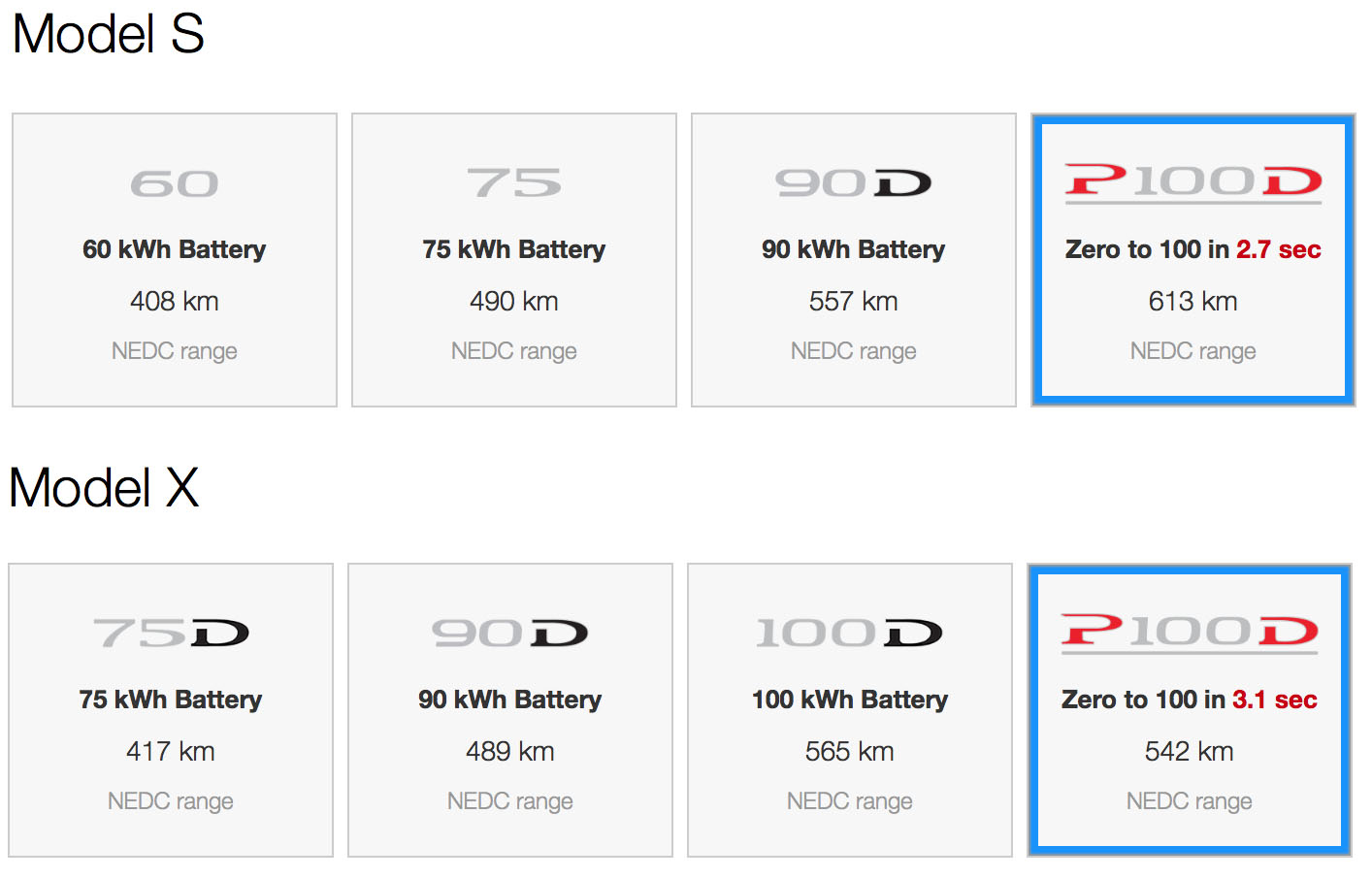
Understanding that these numbers are set by an independent organisation and every car has to get their rating through them, that means every car should be comparable to any other car, right? Well, for electric vehicles, they have a different cycle, since they can’t run the car stationary for some time, or they don’t need to change gears and such. So, comparing NEDC range of non-electric cars (ICE cars as they are sometimes named, where ICE stands for Internal Combustion Engine) is like comparing apples and oranges.
Rated vs typical range
When you go to the settings in your Tesla, under the “Language and Units” tab you can choose to have your range displayed as “Rated” or “Typical”. But what does that mean? Well, the “rated” option displays you remaining range in terms of NEDC range. That is also why it is called “rated”. This range doesn’t mean anything in view of realistic range at all. It is based on a calculation that is purely theoretical (as explained above) and if you use that setting, you will see that the range drops way faster than the actual driving distance. So, while it might be fun to see you’ve got over 500km of range, don’t count on it unless you plan to drive a constant 30kph.
“Typical” is a more realistic setting and uses an average energy consumption of around 183Wh/km for a Model S. The actual number varies from car to car because no 2 motors or battery packs are exactly the same. But it is around that number for the regular S. The P will be slightly higher and closer to 188Wh/km (in my case). That means that if you drive at the average consumption of 183Wh/km, you will be able to get the same range as what the car displays. If you go higher, you will get less and if you go lower, you will get more range out of a single charge.
Now, while I don’t have personal experience with the Model X, this number is something you can easily calculate for yourself. Since it concerns the actual driving range of your car, you just need to charge to 100% and drive in one go to 0% (or close to it, but no more than 5% left). On the trip widget you will see the consumed energy of that trip, which is, for example, 72,4kWh. Assume you have 5% left. Then you extrapolate what the consumption would be at 100%, which in this case would be 72.4 / 95 * 100 = 76,2kWh. This is the amount of energy you can practically use from your battery (in this particular case we’re talking about an 85kWh battery pack). Then you charge back to 100% and see what number the car displays. Assume the car displays an indicated typical range of 411km (the original range of my P85D when it was brand new), then it’s easy to calculate that 76,2 / 411 = 185Wh/km.
In the meantime, I have some 70.000km on my car and have experienced some battery degradation. Recent calculations have shown I have about 73kWh left of usable energy, but also a 100% range of 387km. This results in a typical consumption of 188Wh/km. Batteries also degrade over time, but data has shown that for a Tesla battery pack, the loss is minimal and even after 100.000km you will still average nearly 95% of its original capacity having been through several hundreds of cycles, as shown in the data graph below.
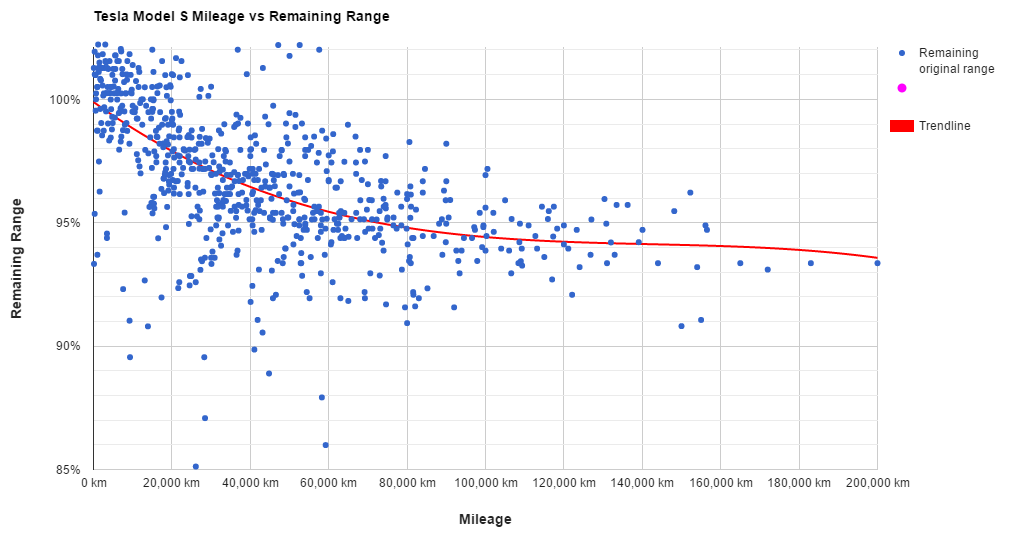
Be aware that Tesla has been known to change this number in subsequent updates. So, before an update you could have 411km of range and after the update, the same charge reads 400, for example. There is nothing wrong with the battery. It’s just the algorithm that has slightly changed to become more realistic.
Real world range
Now that you understand where those numbers are coming from, it is easy to understand the real-world range of a Tesla is unlikely to match the advertised range. There can be so many factors at play here, that it is impossible to get to the bottom of all of them. But I’ll try to go into details on a few of them.
Your right foot
This will probably be the single most important factor of your car’s real-world range. NEDC test are designed to run at certain speeds for a certain amount of time. If you are traveling at higher speeds, you will consume more energy. Also, it is a heavy car with a lot of torque. Therefore, it is only logical that it will take more power to get going quickly than when you are driving a lighter car. So, if you gun it at every stoplight, that might be a lot of fun and especially in a Tesla, this never gets old, but you will consume a considerate amount of power more than the NEDC test will. But that goes for any car, not just an EV.
P versus non-P cars
Tesla makes very efficient electric cars, with low drag coefficients and efficient motors. However, there is a difference between the P and non-P versions of the car in the sense that the P version has a physically bigger back motor. It generates more power to the back, making it a semi-rear wheel drive.
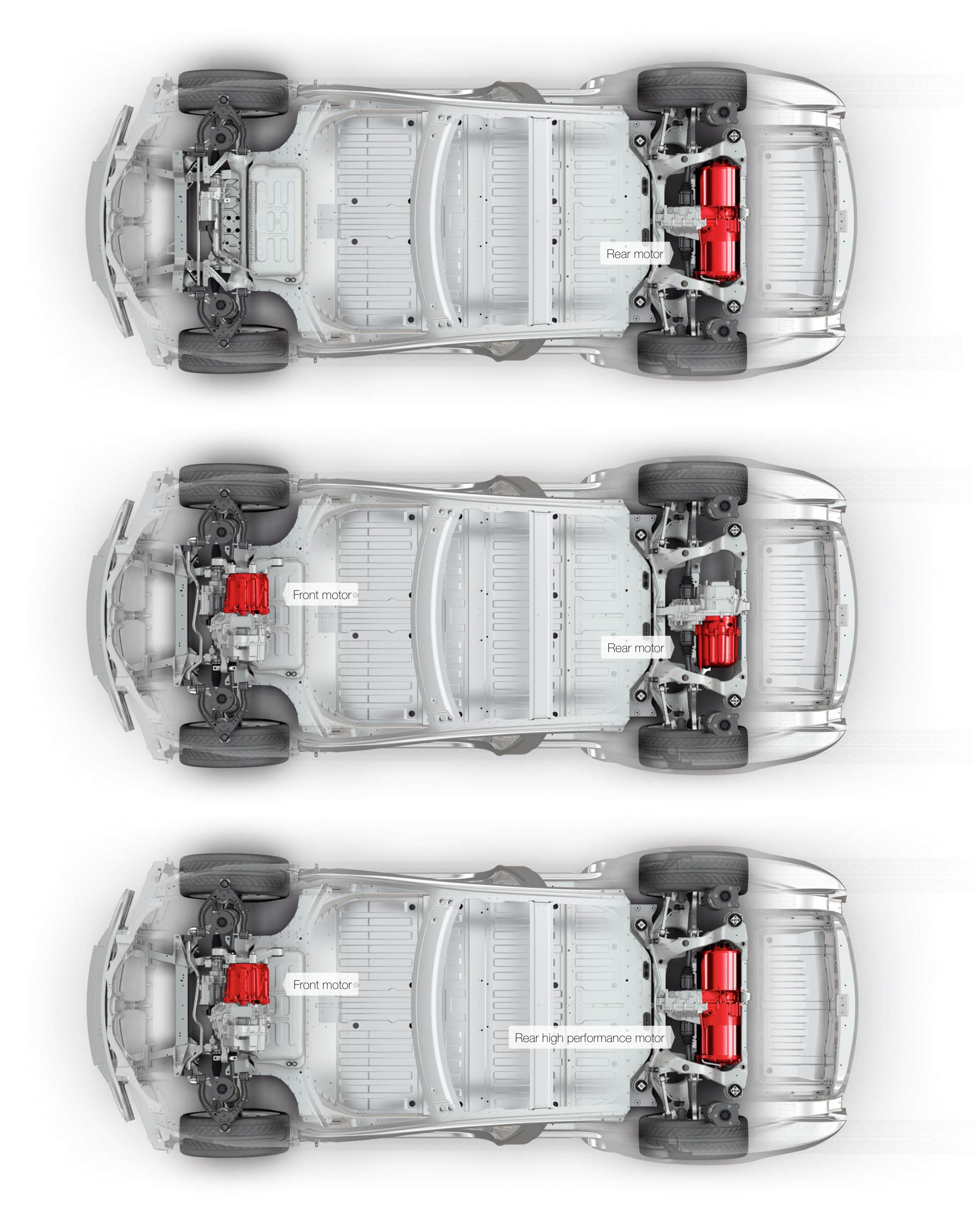
Images copyright Tesla Inc.
Well, at least for the dual motor cars. For the rear-wheel drive cars, there is off course only 1 motor, located at the back, which is replaced with a larger one for the P85 and P85+ cars. But in both cases, the smaller motors are less powerful but more efficient than the larger one. Because of that the P version of the car will always have a higher consumption than the non-P version.
In essence it comes down to optimizing a motor to certain aspects. For example, certain motors can give you ludicrous 0-100km/u times, but they run very inefficiently at low speeds where there is not a lot of torque needed. You can’t have both, so Tesla has to choose the right parameters for the purpose of the car. That is why the P cars have fundamentally different rear motors than the non-P cars. The P is set up for speed and less for efficiency. But that doesn’t mean the non-P cars are slow by any means.
So, how come the dual motor cars have higher range than the single motor versions? It all comes down to efficiency. When they can use 2 smaller motors that are more efficient than one larger motor, they can not only offset the additional weight, but even improve on range. And that is combined with improved handling and traction at the same time, contributing to safety on all road surfaces. Isn’t that a win-win situation!
Tires
Wheels and tires also have an effect on range and that is actually measurable. Of course, it will be clear to you that there is a difference in energy consumption between 215mm tires or 265mm tires, just because the latter one has more contact surface with the road and thus more rolling resistance by nature. But the drawback of using more energy comes with a very high bonus of additional grip. Especially with sticky summer tires, this difference is noticeable.
So, when choosing your tires, you have to be aware of what you’re aiming for: do you want to sacrifice a little bit of range (about 3%) with the sticky 21” summer sports tires for the additional traction, or do you want to go full out for the efficiency of the car and increasing range as much as possible. If you go for the first option of performance tires, then Michelin Pilot Sport or Pirelli P Zero are your best choices for this car. If you want to go for efficiency, then Michelin Primacy or Goodyear Eagle are the better choice.
Also keep in mind that for the first 1.000 – 1.500 km the tires need to be broken in and will consume a bit more. After that period, they will get their range as expected.

Next to the impact of the tires, the rims or wheels also have an effect on range. There is a weight component involved obviously. Steel rims are much heavier than aluminium ones. This weight difference can be significant enough to make informed decisions and that is why hypercars, such as certain Laborghini’s and the Pagani Huyara actually have carbon fiber wheels, which are immensely expensive. For Tesla, the weight difference in the choices are quite small, since they’re all aluminium wheels.
The second factor of rims are the aerodynamics. Some wheels are actually directional, which means it matters whether they are mounted on the left or right side of the car. Some of them draw air in to additionally cool the brakes, while others actual push air out to reduce the creation of air vortices and thus avoid disruption of the airflow, improving the aerodynamic properties of the car. In case of a Model S, the 19” Cyclone wheels (selected in the image above) offer you the best efficiency and least aerodynamic drag on the car, resulting in about 2% more range with these rims at higher speeds.
Combine the 19” Cyclone rims with the Michelin Primacy tires and you’ll get about 5% more range than when applying 21” turbine rims with the Michelin Pilot Sport tires.
Temperature
Temperature is an important factor when driving an electric car. This is what catches most new owners off guard when receiving their car in winter. The car tries to keep the batteries at optimal temperature (which is around 22-23°C for lithium batteries in general) to get the best performance and lifetime of the battery pack. This requires some heating to be applied in winter. In ICE cars that heat comes mostly from the engine heat, but in an EV, you can’t reuse that heat, because there is a lot less heat being generated in the motor. Instead, a Tesla has a 6kW electric heater on board. 6kW! That is the same as the small sauna I have at home! Of course this will have an effect on range when you heat the cabin and need to heat up the battery pack during cold mornings.
The opposite is true also. When it’s really hot outside, you will turn on the A/C and that requires some additional power as well. But in this case, it will consume a lot less, since the battery is already nice and cosy and unless you’re going to be driving in the Sahara, the cooling won’t draw nearly as much energy as the heating, because the cooling happens mostly via passive cooling, by opening up de dynamic flaps besides the fog lights.
Actually, Tesla has a nice range calculator on their website, where you can play with the speed, temperature and A/C settings to see the effect it has on the range. It demonstrates that you can realistically expect to still get about 400km of range on a single charge in winter, on 21” wheels and tires and with the heating on in a 100D. Not bad at all! Some combinations may surprise you, so go and check it out here: https://www.tesla.com/nl_BE/models#range-calculator.
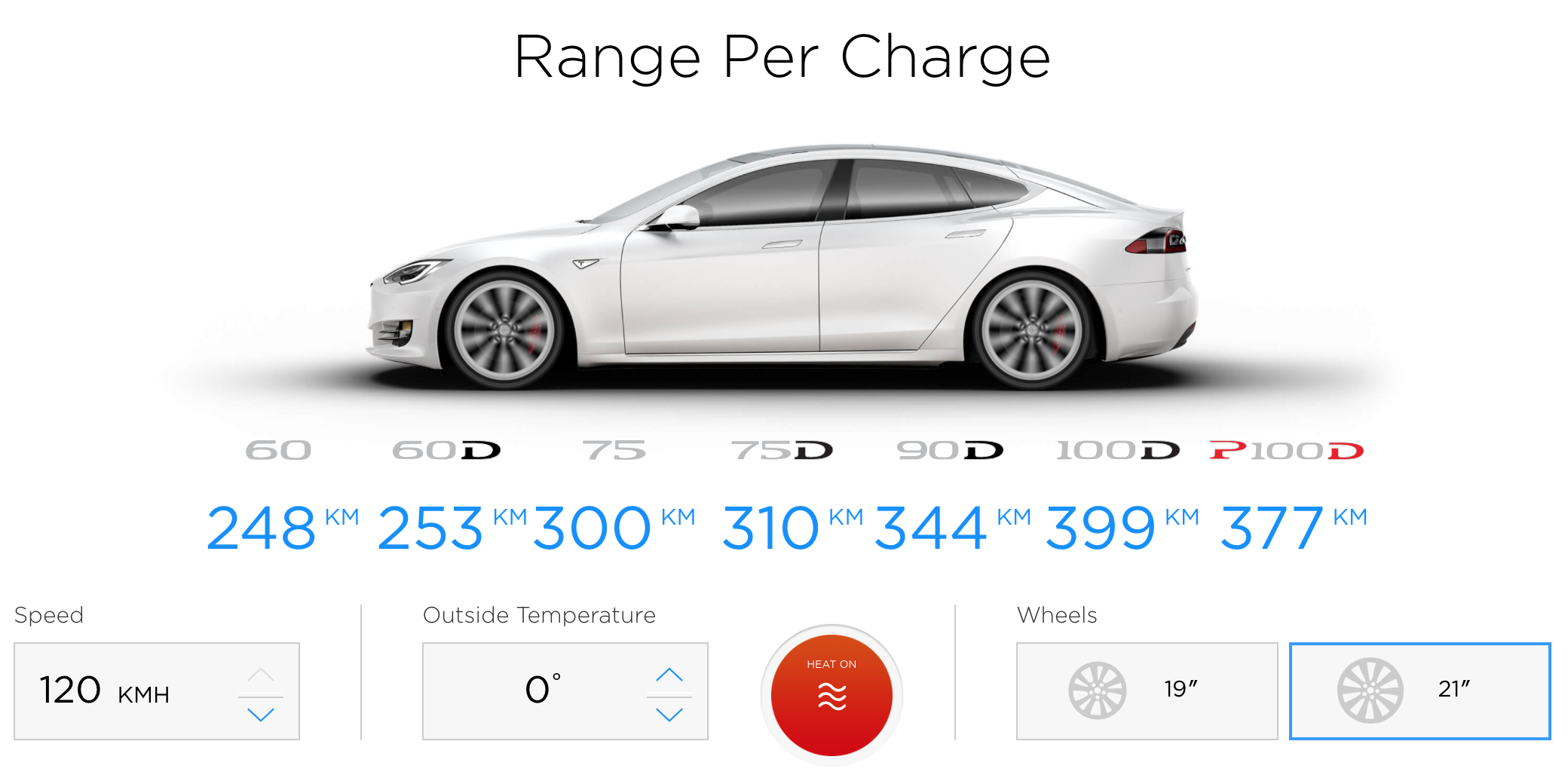
Weight and options
Options on the car also have an impact on the weight of the car. Take the sunroof, for example. This weighs about 80kg more than the fixed/solid roof. That is like adding another passenger to your car all the time. More weight means more inertia and more force that needs to be applied to overcome not only the static friction (setting it in motion), but also the dynamic friction (keeping the motion going). More force means more power consumption.
It’s not only the roof option than adds weight. It’s also lots of small things like heated seats, adding wood finishes, adding a center console, … All these little things add a little bit of weight to the car, which results in a higher consumption than advertised. Especially because the NEDC tests a base car without any options (normally they do).
Next to the options on the car, there is of course the effect on weight of taking your entire family on a 3-week road trip. In my case, my wife, 3 young kids and plenty of luggage together weigh in at an estimated additional 200kg. (And before you start to make fun of my wife’s weight, the bulk of that total is due to the many suitcases in both trunk and frunk). This of course has an effect on the total weight of the car, which on its own is about 2.2 tons for a Model S.
Wind
Wind is also an important factor. Even if the car is one of the most aerodynamic ones available today, it still has some drag that affects the driving efficiency. But, just as with all climate factors and surrounding conditions, this is no different from any other car out there.
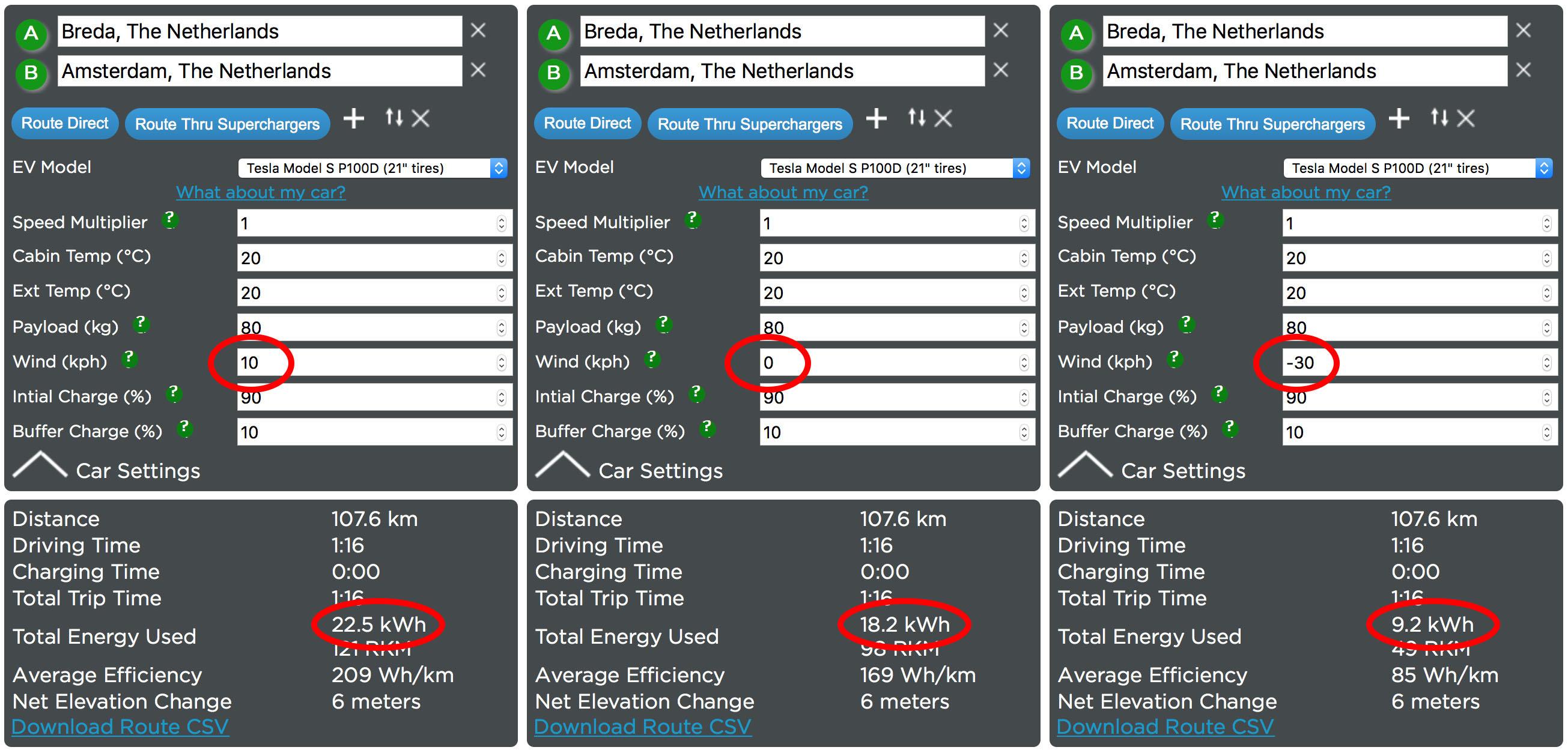
Now, take for example a trip of around 100km in a P100D on relatively flat road. Let’s take somewhere in The Netherlands, from Breda to Amsterdam, to be absolutely sure it’s a flat as possible. Given a load of 80kg for the driver and no head wind at all, you would end up with a consumption of around 18,2kWh. Add a 10kph head wind to the same trip and you end up with 22,5kWh. For a 30kph head wind (which is already pretty hefty) you get 33,4kWh, which is nearly double the consumption compared to no wind at all. Similarly, with a tail wind of 30kph you would only consume 9,2kWh for the same journey.
These numbers are not random but calculated with the help of http://www.evtripplanner.com, which is a pretty good tool for calculating whether or not you can make a certain trip and where to charge. I use it to get an indication on suggested spots, but in the end will decide where to charge while driving anyway. But it definitely shows how important the wind factor is for any car. Just keep in mind when you play with this tool, you’ll probably never get a consistent head wind or tail wind anywhere, since you’ll make turns and wind conditions vary throughout your journey.
Weather and terrain
Next to the temperature, there are other weather conditions that can have a rather large impact on your real-world range. Take snow, for example. When driving on snow, I’m sure you can imagine it generating more rolling resistance, because the car sinks a bit in the snow and has to push that out of the way to keep rolling. Similarly, rain has the same effect, but less pronounced. I’m not talking about sand, mud or gravel yet, because you’d have to be nuts to go driving on such roads in a €100.000+ car (which I actually did last summer in Croatia, being very careful though).
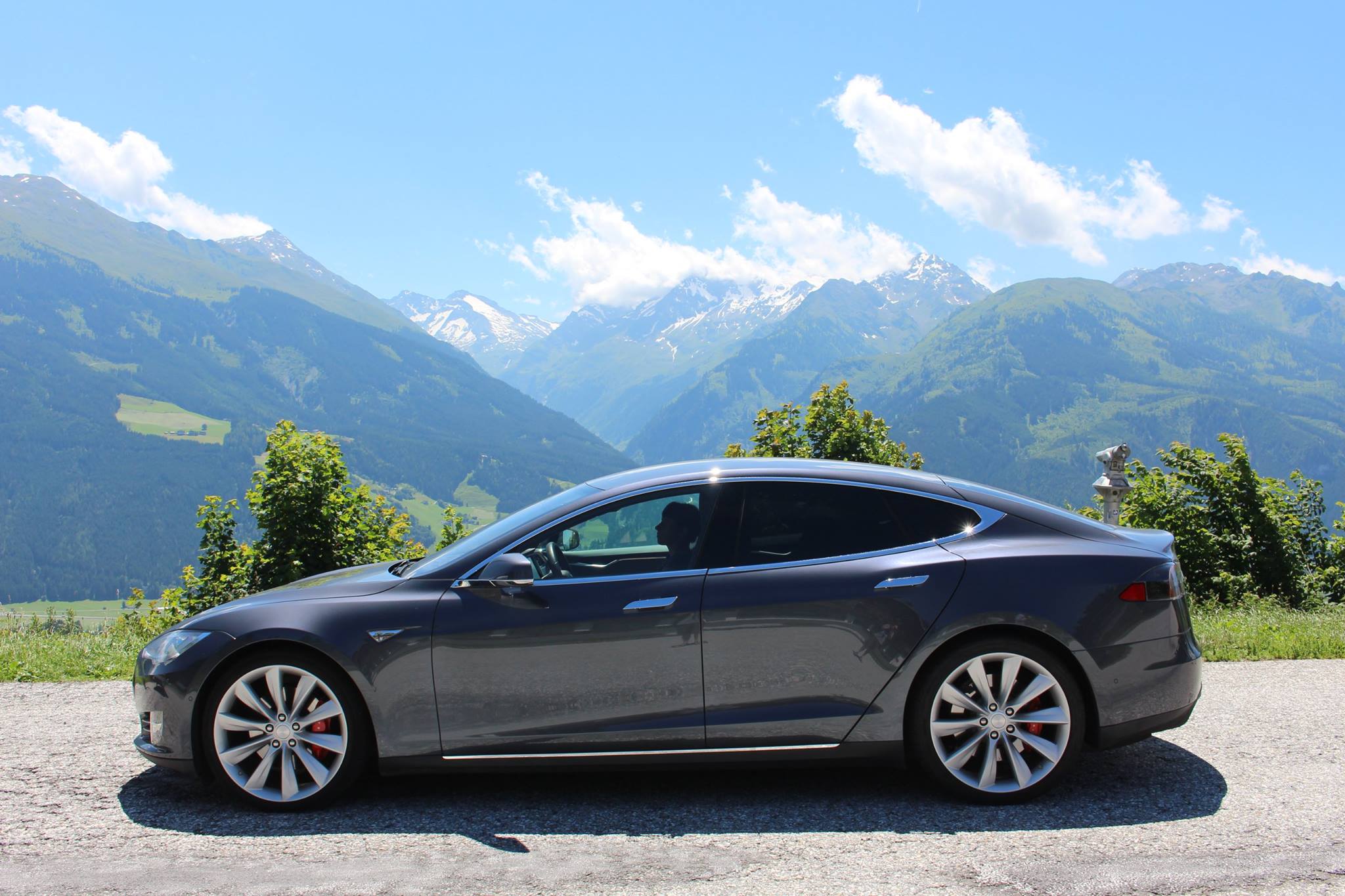
Which brings us to the last factor in my limited list and that is: terrain. It’s no hardship to understand that if you’re going uphill, you’ll be consuming more energy than when you are rolling downhill. The latter one can be quite funny, because if the mountain is high enough and the road is steep and long enough, you actually might gain a few miles by the time you get to the bottom of it. This is due to the regen happening in the car, actually generating more energy by using gravity than it consumes. So, for example, you could start at the top of a mountain pass with 200km left, drive 25km downhill and end up at the bottom with 210km left. You actually gained 35km driving down and drove those 25km downhill for free, so to speak and added another 10 free kilometres of range in the process. Try that with an ICE car!
Again, it all comes down to the same thing and that is: more resistance, be it from rolling or simply the air, requires more force to overcome that resistance and therefore will use more energy.
Balancing out the battery
Another thing to keep in mind is the fact that the way you charge your car also has an effect on the amount of energy you get in your car. With this I mean that if you charge your car each and every night to 90%, which is the recommended daily charge level, and you only drive 80km every day, then the battery will always cycle between 90% and let’s say 70% for the sake of argument. Doing so, you will notice over time the indicated range at 90% is less than what it used to be.
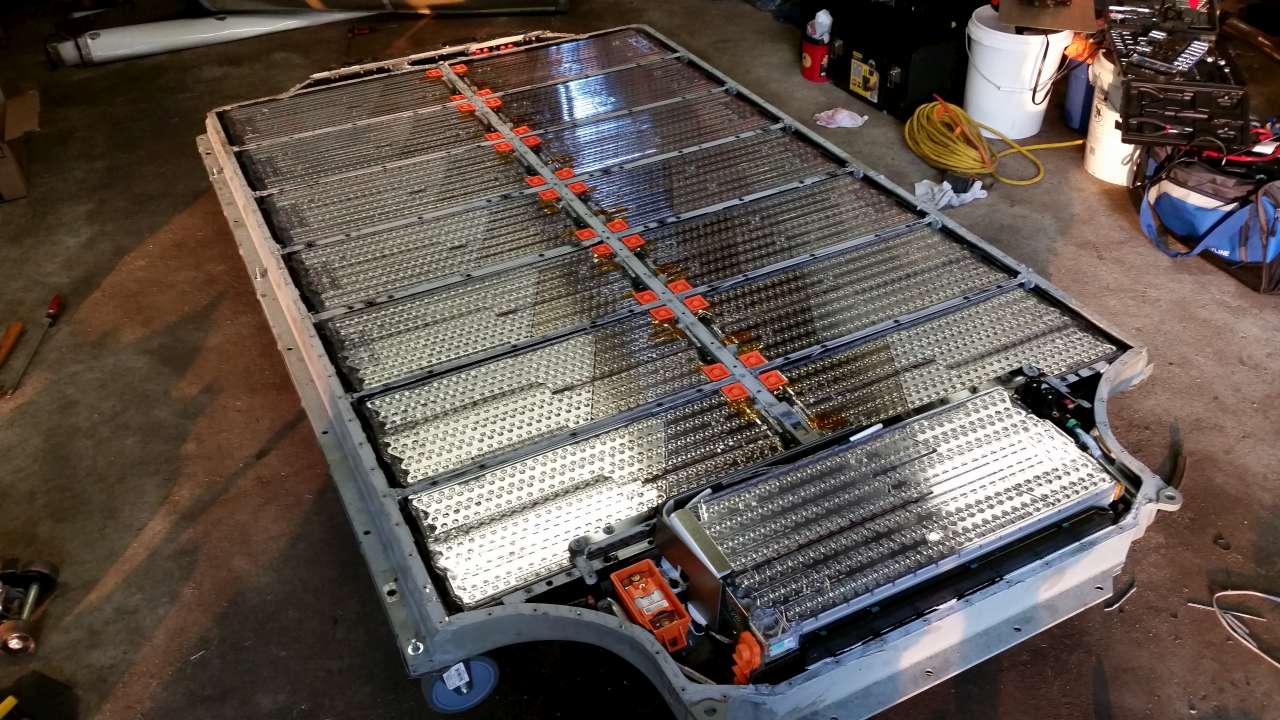
Image of P100D battery pack – copyright http://www.teslaupdates.co
Again, nothing is wrong with your battery, it is just that the 7.000 odd cells in the pack have become unbalanced. A 100kWh battery pack is actually comprised of exactly 8.256 cells! This means that one cell might be 90% full, the next one may have some more space left. The full ones mark the battery as having reached its intended charge level, thus resulting in a slightly less indicated range. In itself this is perfectly normal behaviour. It is very hard to determine how full a battery cell actually is. You can only know for sure how much you’ve put in and how much you’ve pulled out of it.
Fortunately, this is an easy one to fix. Instead of only using that 20% range, you should drive the car until the battery has a low state of charge (somewhere below 10%) and then charge it all the way again. This way all battery cells have been pretty much depleted and filled up again, thus balancing the full pack to its normal capacity again.
If you want to know more about the composition of a Tesla battery, I suggest reading @wk057’s blog post, because he has deconstructed several of them by now.
Conclusion
So, all in all, the real-world range of a Tesla is not a simple number to give. All I can give is the consultant’s default answer: “it depends” So many factors to take into account and so many of them are personalised, like options, tire choices and driving style. The main tip I have for you here is to get to know the consumption of your car with your driving style and don’t let anyone else throw you off by displaying other numbers. They have different cars and different driving styles.
Should this article have been helpful and you want to buy a Tesla, please use my referral code http://ts.la/steven1007 and get free supercharging on your new or inventory car.